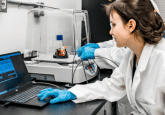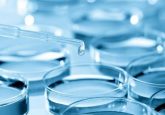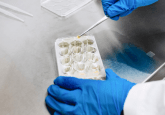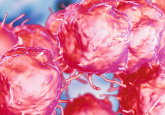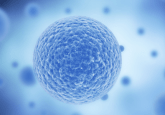Optimizing cell culture materials for commercial cell therapy manufacture: an interview with Erik Vaessen
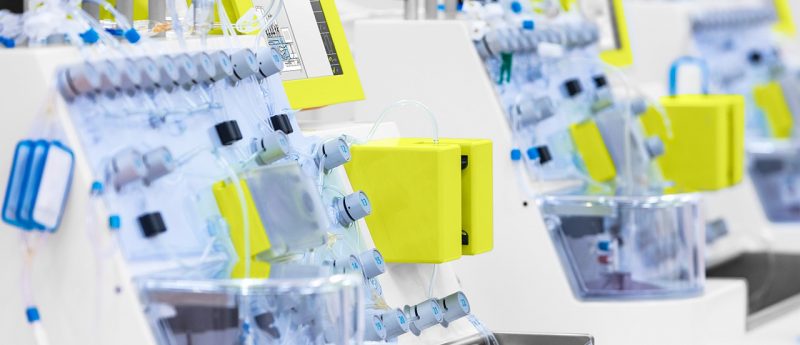
In this interview, Erik Vaessen (FUJIFILM Irvine Scientific, CA, USA) discusses the impact of raw materials on the cost of manufacturing, the importance of selecting the right cell culture media, and shares his predictions for the future of the field.
Please introduce yourself and FUJIFILM Irvine Scientific
I am Dr Erik Vaessen, Senior Director of Global Sales and Marketing for Bioproduction and Cell & Gene Therapy at FUJIFILM Irvine Scientific. My passion has always been for life sciences, where I have worked since earning my PhD in Biochemistry. I joined FUJIFILM Irvine Scientific over 10 years ago as the Bioproduction Business Manager for Europe. In 2017 we brought sales for Cell and Gene Therapy and Bioproduction under my management as Global Sales Director. I assumed responsibility for marketing functions as well as sales in 2018.
As early as 1970, FUJIFILM Irvine Scientific was providing media for research, industrial and clinical applications. From laboratories to large-scale production, and in fields as diverse as the manufacture of biotherapeutic drugs and the growth of embryos after in vitro fertilization, our products and services enable scientists and clinicians to generate sufficient numbers of fully functional, fit-for-purpose mammalian cells. It was our expertise in medical media for oocyte and embryo culture that led to our decision to serve the cell and gene therapy markets. Our knowledge of cell biology and regulatory capabilities, coupled with our experience in supporting blockbuster biopharmaceuticals, provide unique value to our cell and gene therapy customers.
How has the field of cell and gene therapy evolved since you have been working in the industry?
The acceleration of cell and gene therapies from an area of research just a few years ago to a field with hundreds of new therapies moving into clinical trials and approvals is remarkable. I believe what we learned in the development of biotherapeutics, a more mature field, contributed to the speed of this progress. Now there is a lot more focus on manufacturing strategies and regulatory requirements. At FUJIFILM Irvine Scientific, we leverage our expertise from supporting commercial biotherapeutics with our experience as a medical device manufacturer to help our customers accelerate their path to commercialization of cell and gene therapies.
How much of an impact do raw materials have on the cost of manufacturing and, ultimately, the cost of goods sold?
There are many factors regarding raw materials that affect the cost of manufacturing. Still, I think it’s becoming more evident that the formulation of a medium and the raw materials that go into it are critical factors to consider in the early phases of research. Is the formula scalable to large-scale cGMP manufacturing? Will any of the raw materials or components pose regulatory hurdles worldwide? Does the formula contain a raw material that can be dual-sourced, or is it only available from a single-source – something that poses a risk to continuity of supply?
The cost of raw materials is the most straightforward part of the equation. Ensuring that the raw materials in media are capable of supporting commercial manufacturing of a therapy early in the development process helps reduce some risks of later costs due to unforeseen issues.
Qualifying raw materials is crucial to ensure source, quality, and risk mitigation. The right supply partner will provide guidance and perform extensive raw materials qualification to minimize the costly risk of failure during scale-up transfer to pre-clinical and clinical applications, or commercial manufacturing. As an industry, our goal is to bring the cost of ownership down to make cell-based therapies available to large patient populations.
How important are chemically-defined, xeno-free, and serum-free formulations to large-scale therapy manufacturers and their regulatory outcomes?
Cell culture media is widely considered to be the most important factor in the culture of cells for advanced therapies for many reasons. The nutrients, growth factors and hormones it contains can be designed to push the cells to grow in number, or push the cells to differentiate to more mature cell types depending on the application. Media that contain undefined components or serum can cause undesirable effects on cells via the same mechanisms.
Achieving reliable results is critical for commercial applications. A chemically-defined formulation provides the most control and consistency in therapy production. So does the use of a complete medium. A complete medium reduces process steps and operates in a closed system, reducing the chance of contamination and variability and enhancing traceability. Chemically defined media also reduces the risk of introducing unknown and undesirable components to a patient. I predict that as regulations mature in this field, the use of chemically defined media will become increasingly important.
How does FUJIFILM Irvine Scientific support customers’ maturation and expansion throughout the development and manufacture process?
FUJIFILM Irvine Scientific partners with our customers from the start to put a plan in place for their development and manufacture processes. We provide a complete solution with support from experts at every step of the way, from initial planning and media optimization, through to manufacturing and shipment.
Earlier, we discussed flexibility as being an essential factor for manufacturing. At FUJIFILM Irvine Scientific, we have taken the agnostic and open platform approach to provide customers solutions that fit their specific needs. While optimized to work together, our products are also designed to work with commonly available alternatives. We will also customize packaging to work with our customers’ choice of bioreactors and manufacturing equipment.
Ensuring the formulation and protocols are designed to support scale-out to manufacturing from the start smooths the path to bringing a new therapy to market. Regulatory factors must also be considered. We see more stringent regulatory requirements for cell and gene therapies than for biopharmaceuticals. A high level of regulatory support, and appropriate documentation packets facilitates the progress of a new therapy towards commercial use.
Cell and gene therapies are inherently patient-centric, and therefore might require some adjustment of suppliers to ensure they are fully supported. Regional manufacturing enhances the continuous supply of media. FUJIFILM Irvine Scientific has sites in the US and Japan, and is currently constructing a third manufacturing site in Europe to meet customers’ needs.
What is your prediction for the next big trend in cell or gene therapy?
Innovation in this field is rapid. The next big step forward will be to drive towards simplifying and automating processes to improve efficiency and bring the cost of advanced therapies down. Flexibility is also an important factor when looking at manufacturing solutions. Customers and suppliers have to be responsive to meet the evolving needs of everything, from genetically modified cells, to protocols and custom packaging to work with a variety of bioreactors.
New technologies and processes will come into play. Artificial intelligence, clustering, and decentralizing manufacturing are all being explored as ways to make therapies more precise, accessible and affordable, and also fully aligned with flexible, personalized, or combinatorial therapies.
As our understanding of stem and immune cells increases, new treatments are being developed. Take MSCs, for example. Studied extensively for applications in regenerative medicine, and for their immunomodulatory properties, their use is expanding. Exploration is ongoing into the role and utility of MSCs for the treatment of cancer, with consideration of safety aspects, both as a direct cell therapy and as a ‘Trojan horse’ carrier of anti-cancer agents. Another area of exploration is the use of MSCs in the treatment of acute respiratory distress syndrome associated with COVID-19.
Additionally, new protocols are achieving genetic modifications of T cells using non-viral delivery solutions. We see a tendency and desire to utilize alternative approaches to time- and labor-consuming lentiviral technologies, such as CRISPR/Cas9, virus-like particles, transposable elements, etc. The range of uses for extracellular vesicles and exosomes grows continuously, from the replacement of MSCs as an immunomodulatory agent in autoimmune diseases, ischemic insult and neurotrauma, to the role of tumor-derived exosomes in cancer therapies. With increased application potential, there is also the need for standardization and safety, as well as requirements of precise quantification tools and quality definitions.
These are just a few new trends in the cell and gene therapy field. Agility and responsiveness are necessary to evolve with the industry.
How can people contact you if they would like more information?
Our FUJIFILM Irvine Scientific media specialists are available to provide more information about our advanced cell culture media solutions to support basic, translational and clinical research, and commercial applications. You can also contact us here.
